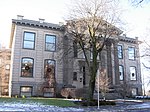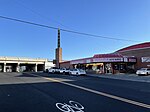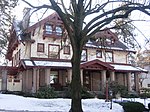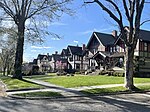Benewah Milk Bottle

The Benewah Milk Bottle is a landmark in Spokane, Washington. Listed on the National Register of Historic Places, there are two constructed milk bottle-shaped buildings in the Spokane area, which accompanied a successful dairy operation's stores. One of the buildings is located on South Cedar Street in Downtown Spokane, while the other is located two miles north in the Garland Historical District of North Hill. On the morning of September 26, 2011, the Garland Historical District Milk Bottle restaurant, owned by Mary Lou Ritchie, and the historical Ferguson's Café, located next door, were heavily damaged in a fire. Fire investigators believe the fire started in a walkway between the two restaurants.
Excerpt from the Wikipedia article Benewah Milk Bottle (License: CC BY-SA 3.0, Authors, Images).Benewah Milk Bottle
South Cedar Street, Spokane
Geographical coordinates (GPS) Address Nearby Places Show on map
Geographical coordinates (GPS)
| Latitude | Longitude |
|---|---|
| N 47.652777777778 ° | E -117.43222222222 ° |
Address
Milk Bottle
South Cedar Street
99201 Spokane
Washington, United States
Open on Google Maps











